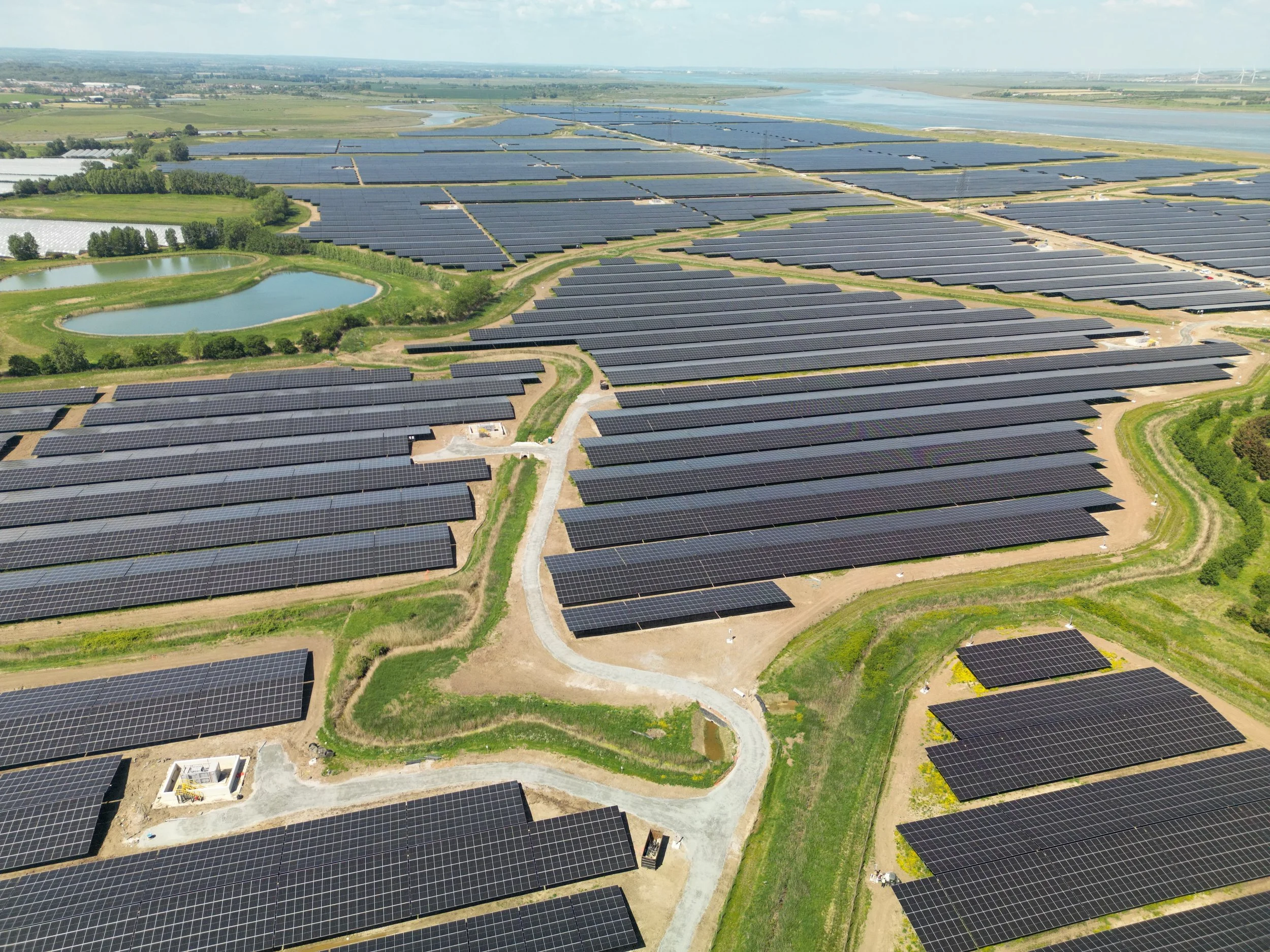
Generating green power.
Cleve Hill Solar Park Ltd is constructing a solar and energy storage park on the north Kent coast. Cleve Hill Solar Park is now generating renewable power through photovoltaic panels, providing clean power to thousands of UK homes. Construction began in early 2023 and the solar park is now fully operational as of Summer 2025. The energy storage part of the project is expected to be completed by early 2026.
Cleve Hill Solar Park.
Cleve Hill Solar Park is a solar and energy storage park situated on the north Kent coast. Now operational, its 373 megawatt (MW) capacity can provide enough affordable and clean electricity to power over 102,000 homes. The project comprises of an array of over 550,000 solar photovoltaic modules, energy storage and associated development infrastructure.
The site is located one mile northeast of Faversham, three miles west of Whitstable and situated closest to the village of Graveney.
Due to the capacity of the solar park exceeding 50 MW, the project is classified as a Nationally Significant Infrastructure Project (NSIP) and was granted development consent by the Secretary of State for Business, Energy and Industrial Strategy in May 2020.
Working to make the UK more green.
The benefits of the solar park.
Cleve Hill Solar Park has the potential to power over 102,000 homes.
A dedicated Habitat Management Area of 56 hectares (ha) (138 acres) for bird species including Lapwing, Brent Goose, Golden Plover and Marsh Harrier.
Energy storage technology, providing power to people’s homes when it’s needed the most.
Significant annual business rates will be generated per year for local authorities to invest in improving local services.
An on-site biodiversity net gain of 65%.

